This is a very interesting temple to visit.
Coming down the Mid Levels Escalator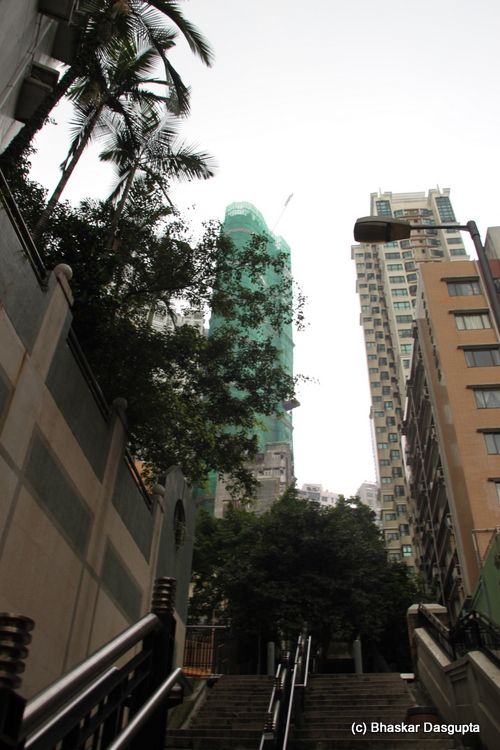
That’s where I was, right on the top…
The temple is covered with green ceramic tiles in the shape of bamboos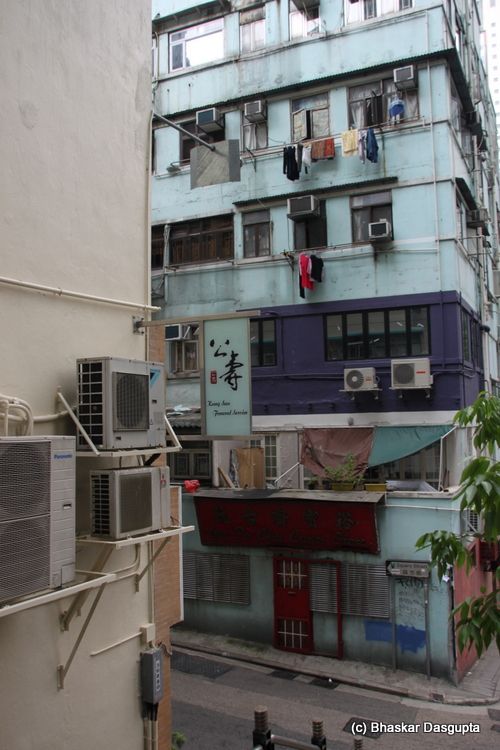
Square Street. Hmmm, it wasnt square at all..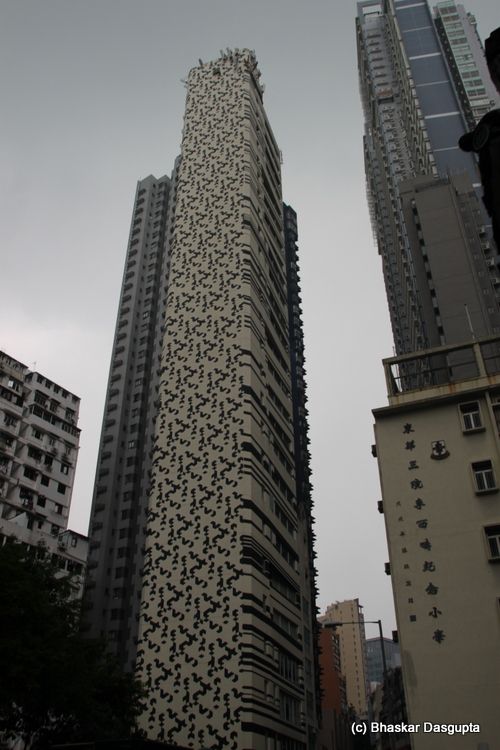
This building was very strange, looked like it was covered with giant ants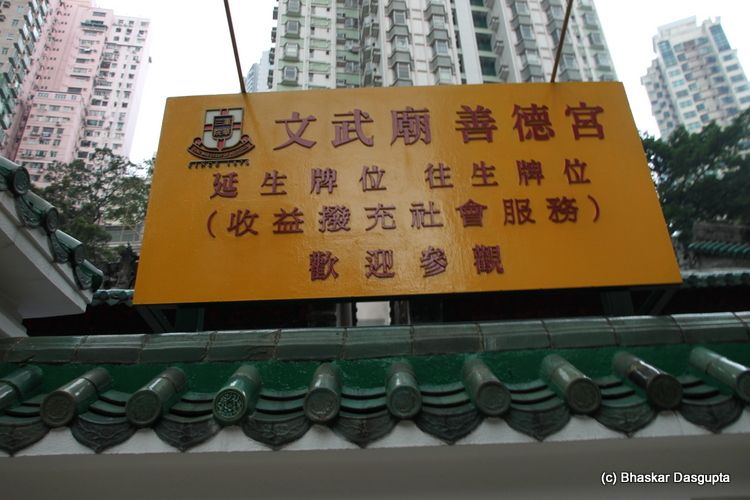
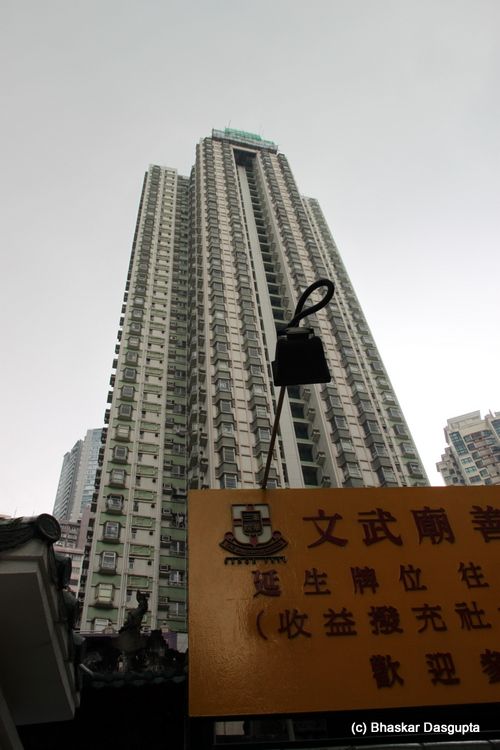
Entering through the gates…there are two gates, one for each shrine
This shrine is to a Chinese statesman of the 3rd century BC called Man Cheung, who is worshipped as the god of literature and is represented holding a writing brush.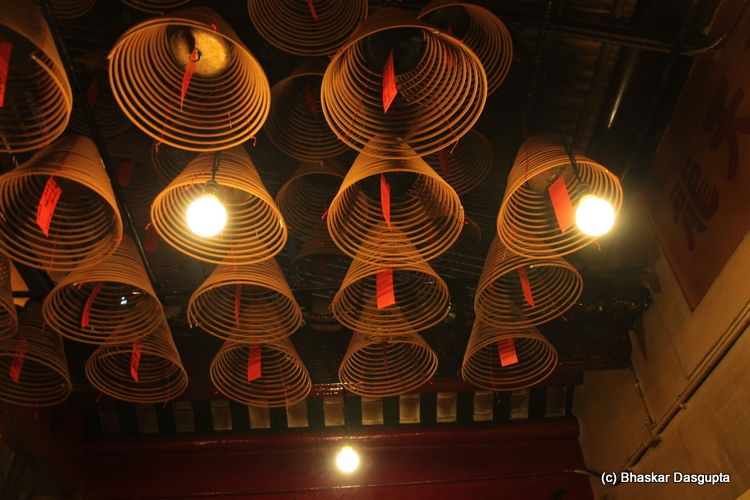
These are incense sticks. Coiled up. Apparently they can burn for up to 3 weeks. 
Somebody worshipping at another shrine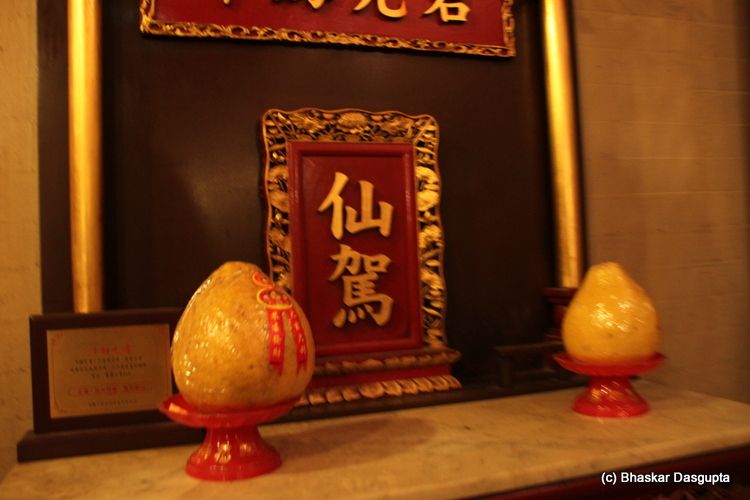
This is, if I am not wrong, something to do with fortune telling. You pick a random drawer and then take it to a fortune teller who then tells you your fortune. 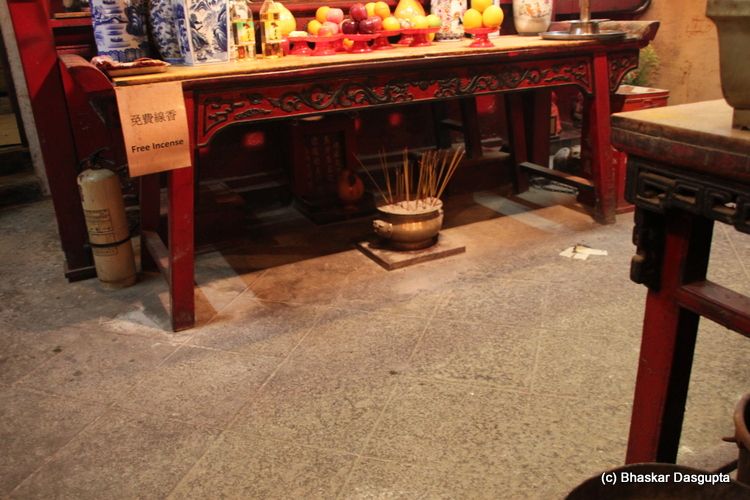
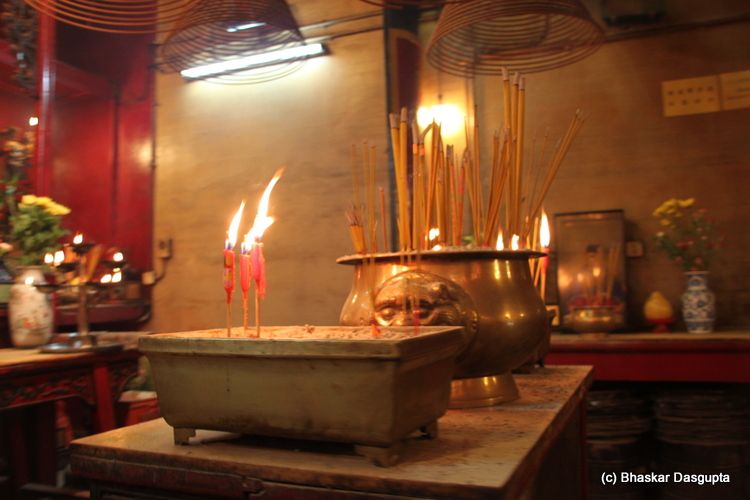
You can pick incense sticks (which are free for the simple ones) and then light them, pray to the God, and then stick them on these sand troughs. Incense is food for the spirits and Gods…ergo, you keep them fed and happy. 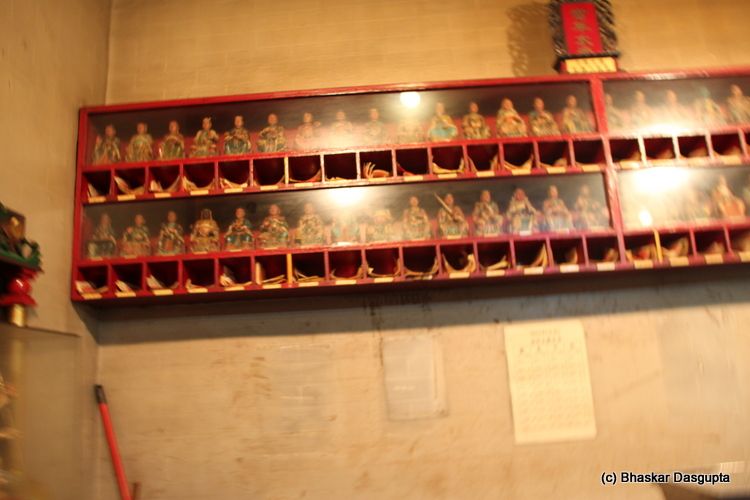
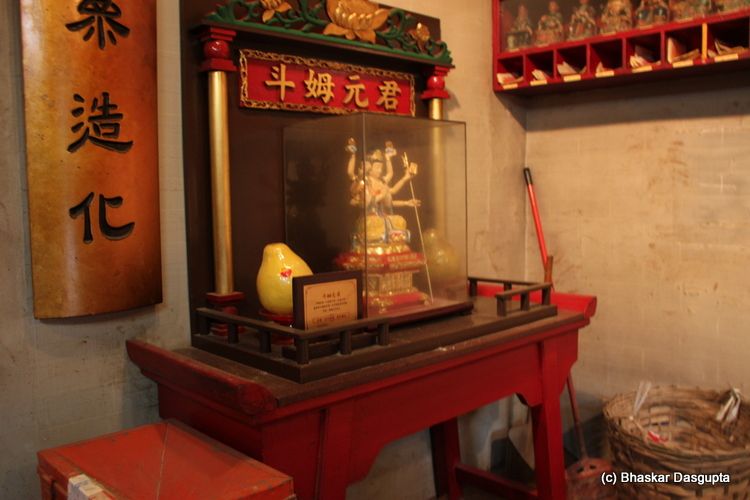
Another shrine and more deities. This multi armed Goddess is s Kuanin, the goddess of mercy, who is associated with the Buddhist bodhisattva, Avalokitesvara.
Quite a lot of mandarins would come here to pray for success in their examinations. Some detail on this god.
Man Cheung (
, Wen-chang in Putonghua), a Taoist deity who is said to have lived as a handsome man in Szeshuan province during the Tang Dynasty. He was reincarnated several times, and was finally deified in the Yuan period, A.D. 1314.
He is said to have transformed himself 98 times, and to have wrought numerous wonderful effects. He has promoted all the three national religions (Confucian, Buddhism and Taoism). He equals in authority the three rulers of heaven, earth, and the sea, and assists those who are seeking office, or testing their abilities in the public examinations.
A very old bell, dating back to 1847. This would be taken out ceremoniously in processions while banging this drum. 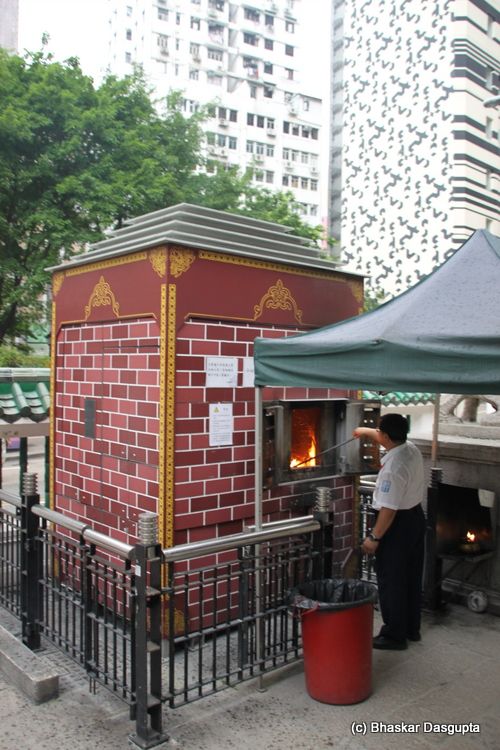
This is where you burn spirit food, to keep your granny and ancestors happy. 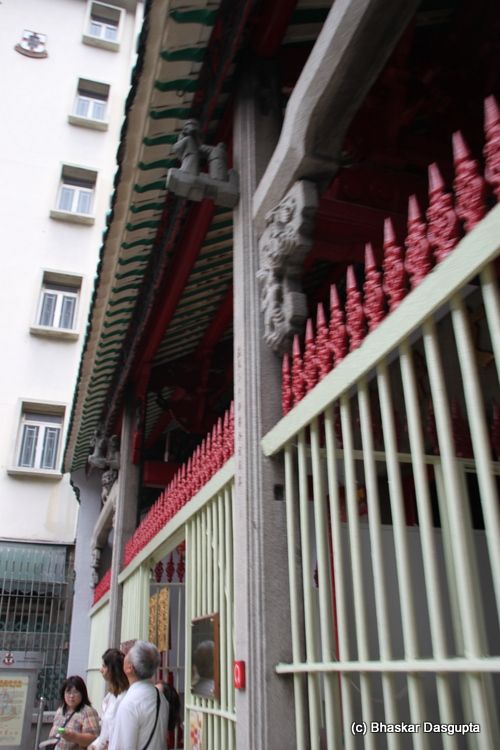
This place also functioned as a law court, I quote:
About 150 years ago, when disputes could not be settled by British laws, the local people (plaintiffs and defendants) would come to the Man Mo Temple and solve their problems the Chinese way. According to the legal system of the Qing Dynasty, the plaintiff and the defendant would make a promise (and curse) in the temple, then wrote it on a piece of yellow paper. They then killed a chicken, chopped off its head, let the blood run on the yellow paper, and burned it. The Chinese people believed that since the promises were made before the gods in the temple, if they broke these promises, they would suffer dearly from the curses (or the form of punishment) they too have casted previously upon themselves. Hence, the Man Mo Temple was once the Court of Law for the local people many many years ago.
I then pop into the other shrine next door. 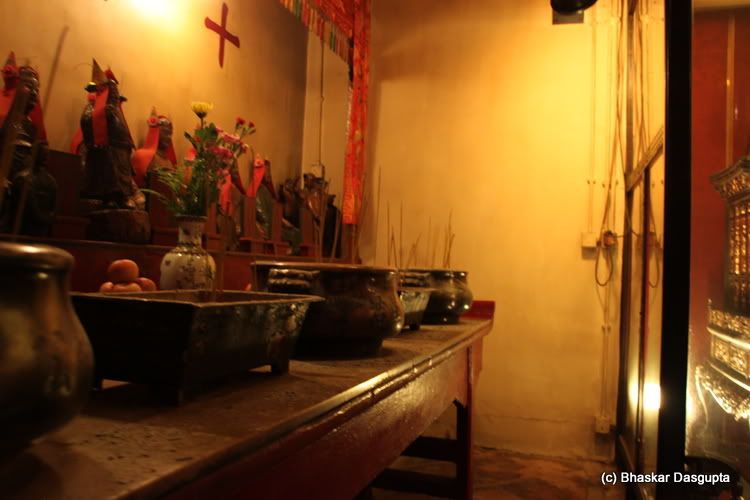
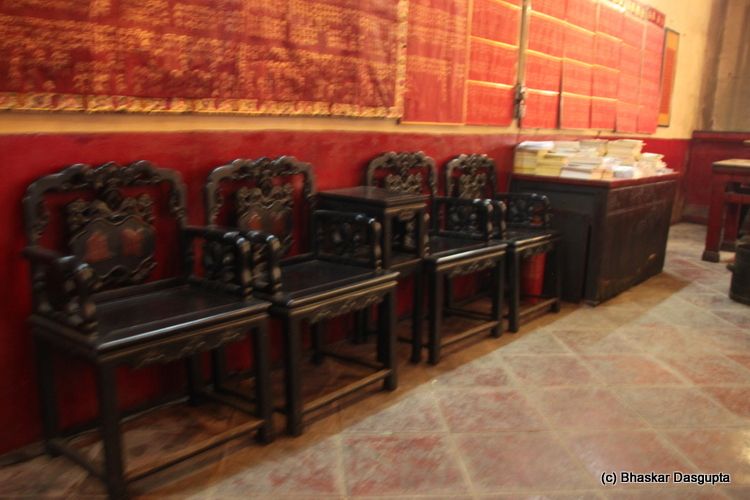
This is the shrine to the war god. I quote:
Kwan Yu (
, Guan-yu), was a native of Shandong province. He became a general under the Posterior Han dynasty over 2,000 years ago. He is one of the most popular of the Chinese divinities and is worshipped in all over the country. He has also been accepted as patron saint of various trades and professions (policemen and thieves too!). This has led to his being regarded as the tutelary deity of money-making enterprises in general.
Some lovely architecture and furniture in the shrine. 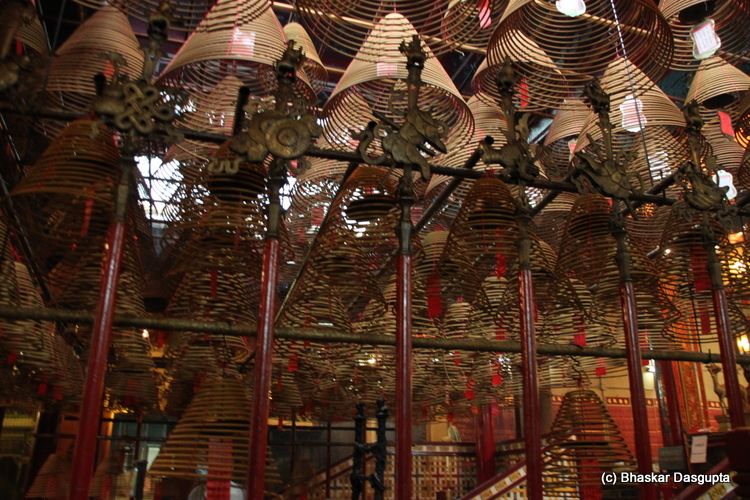
More of the conical incense sticks. 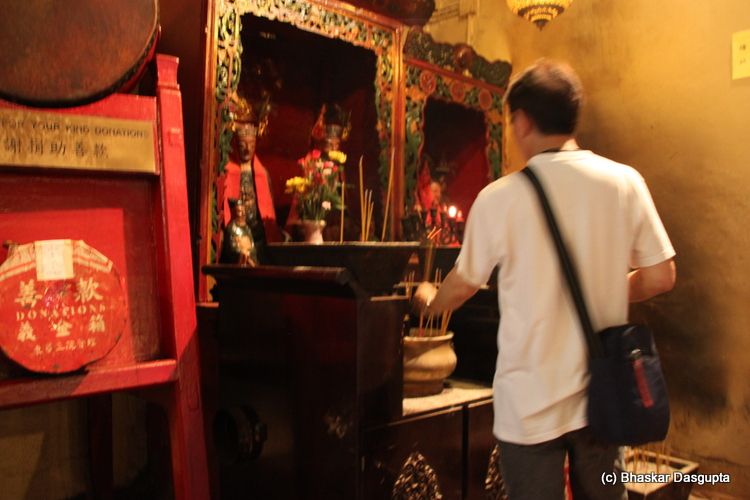
Somebody lighting incense sticks. 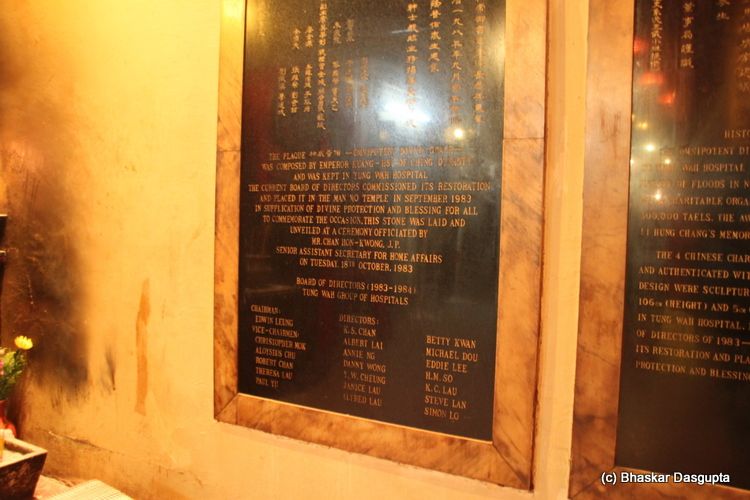
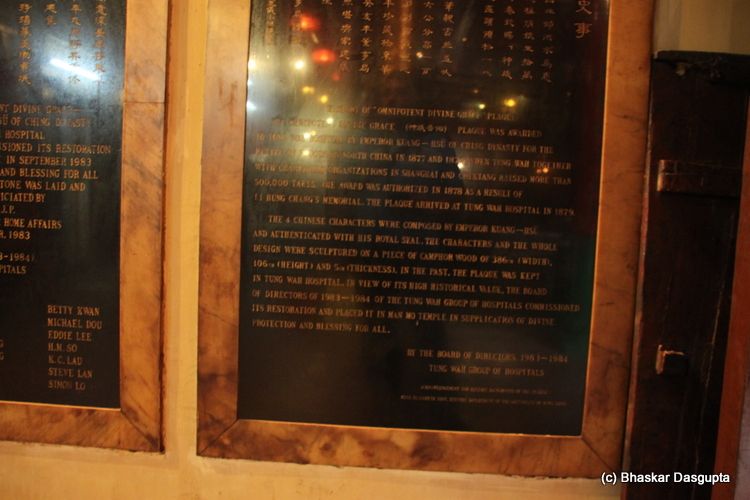
Couple of plaques talking about the history of the temple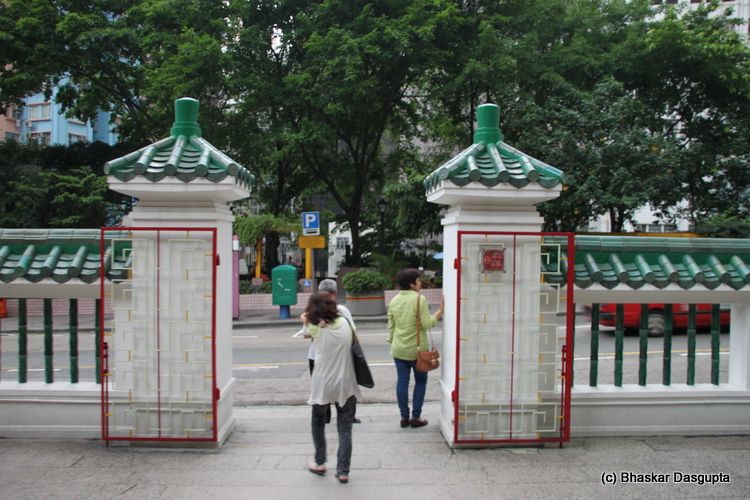
Popping out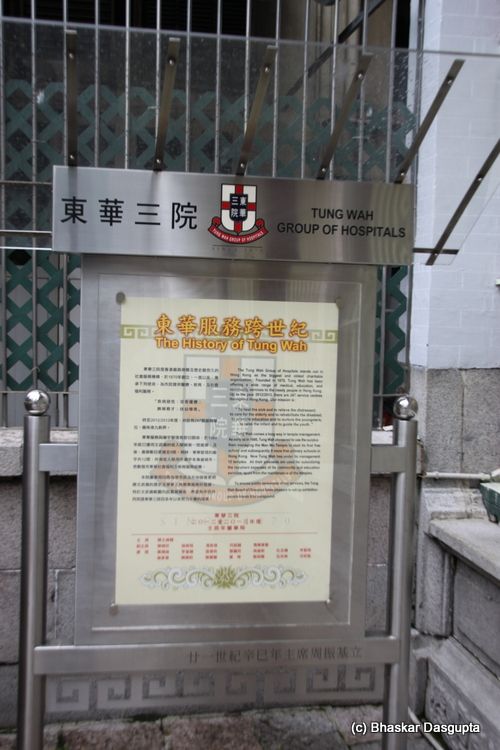
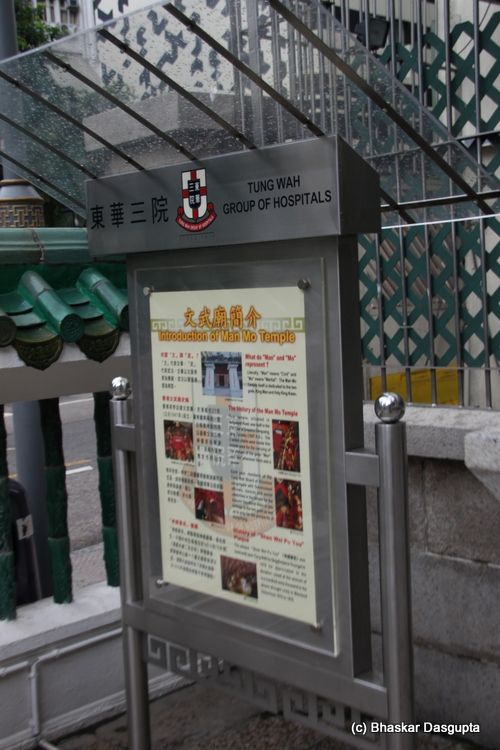
Couple of plaques with the history of the hospital. 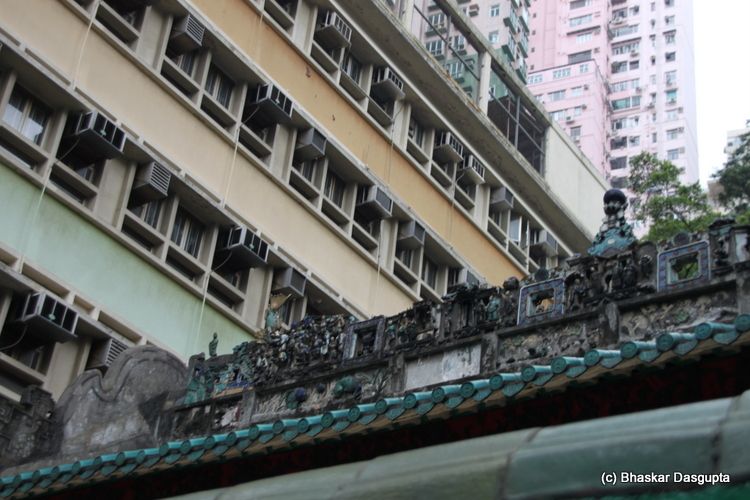
Coming out and giving a look up at the roof decoration.
Hmmmm, I have to admit that I liked the temple, even though the temple was hazy with incense smoke. I liked it, the ambience and I felt the emotions of thousands of students down the ages who have prayed here for divine intervention for making them successful in their studies. And for the triads and policemen.
Fascinating.


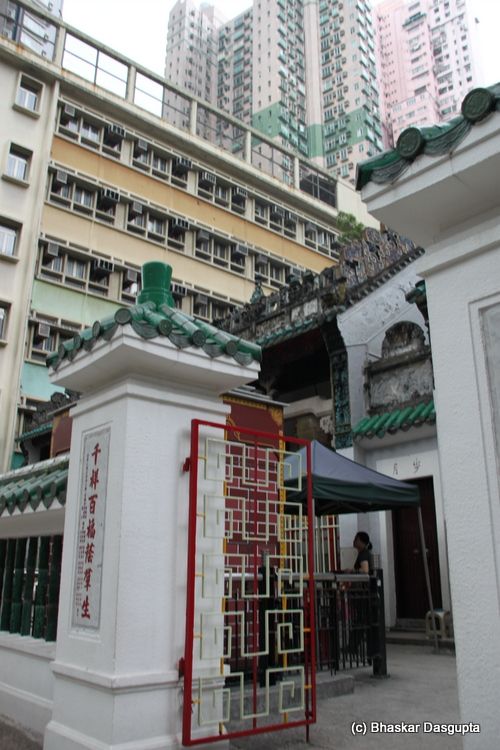
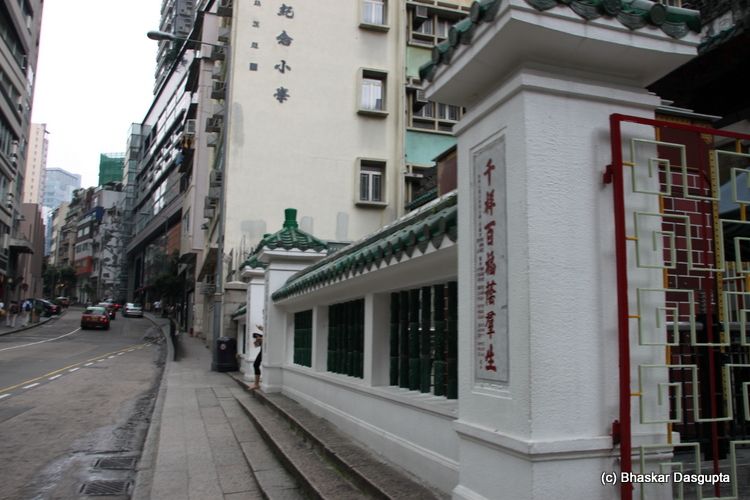
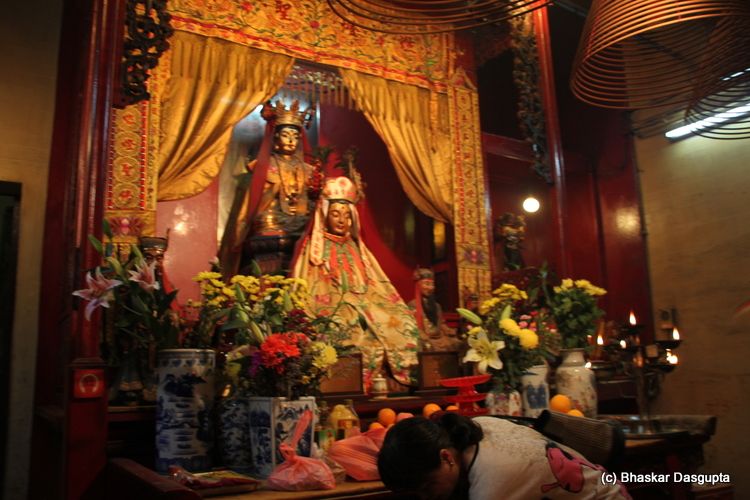

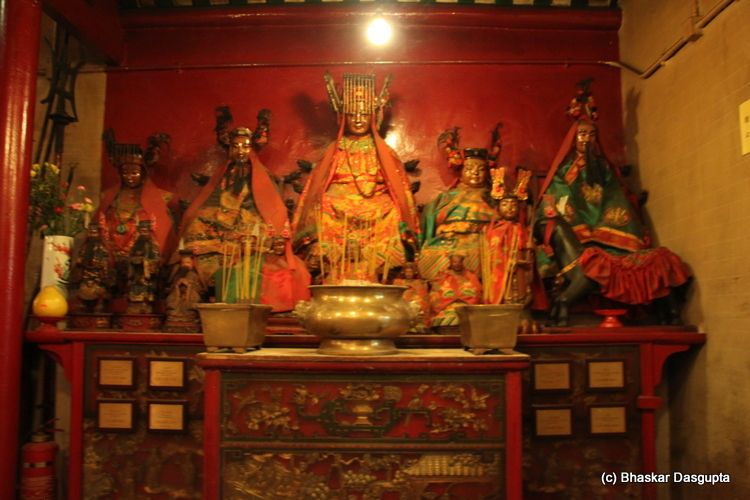
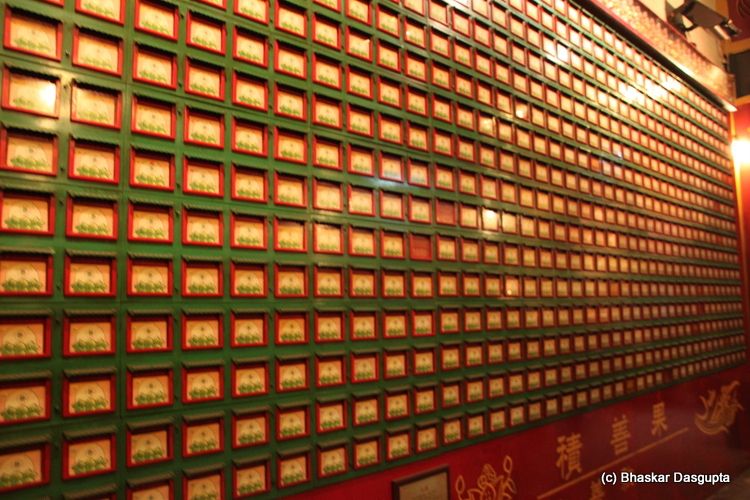
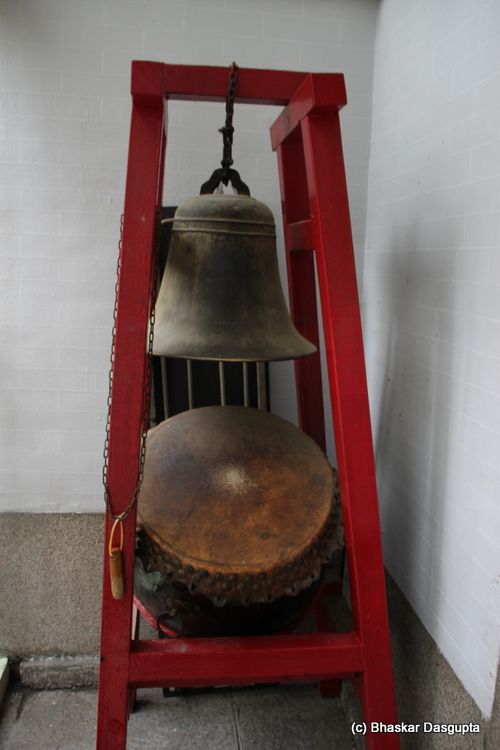
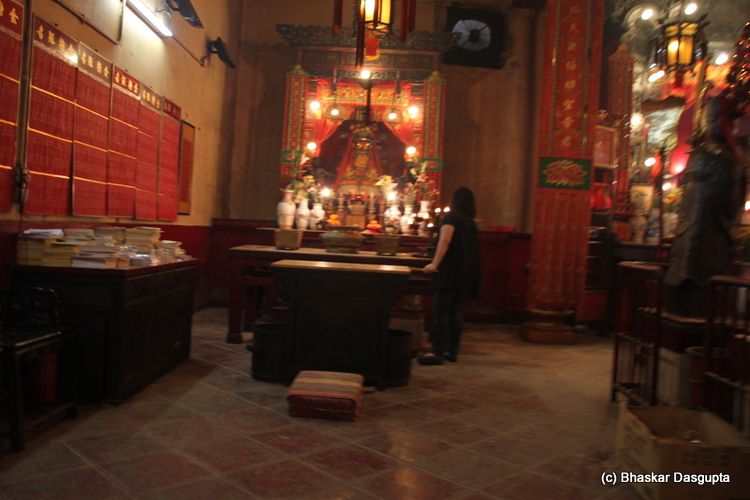
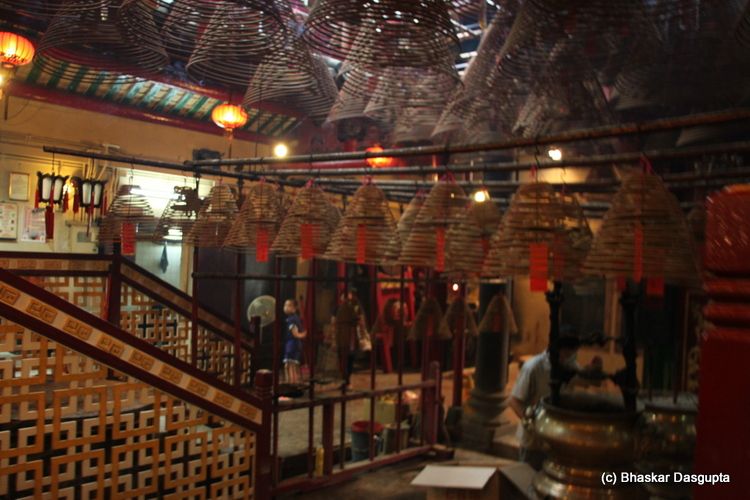
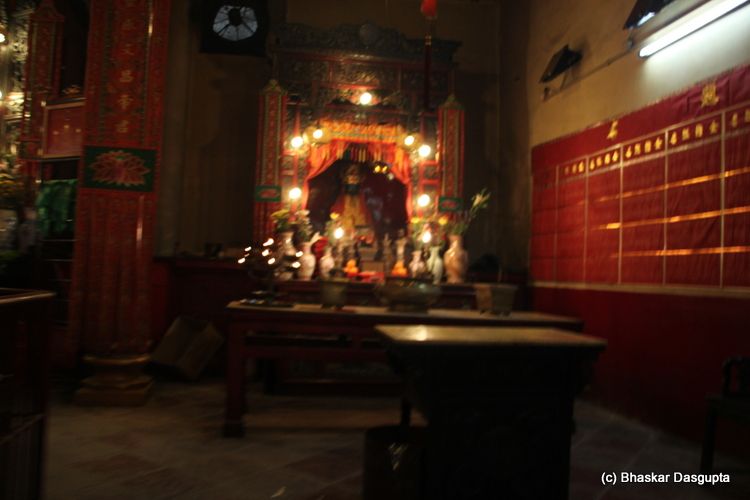
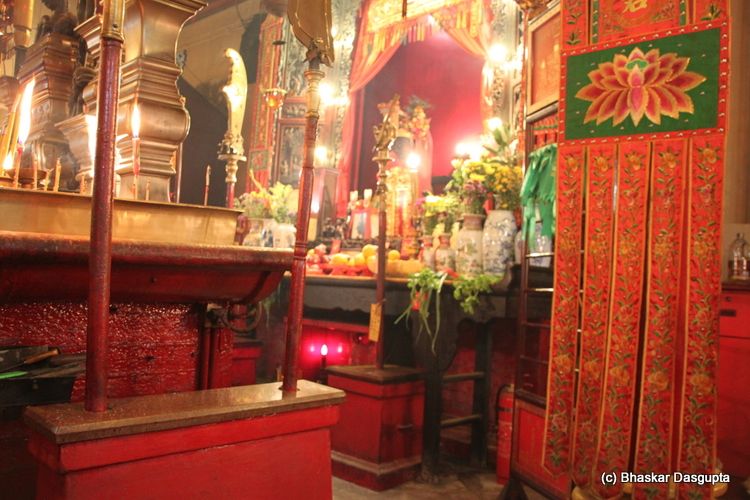
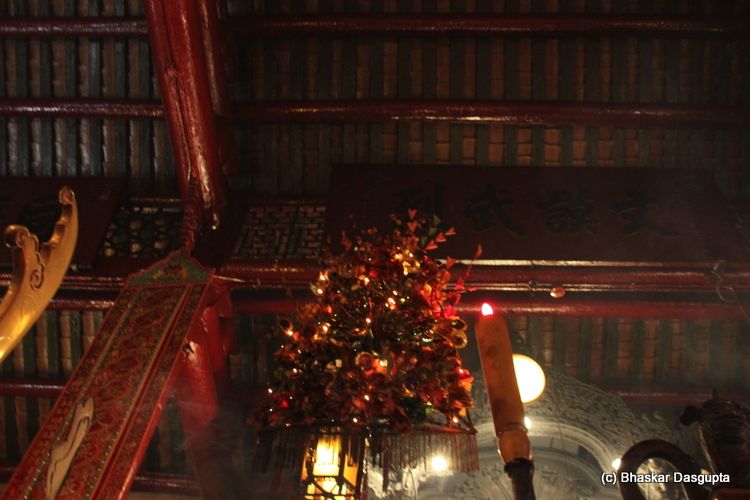

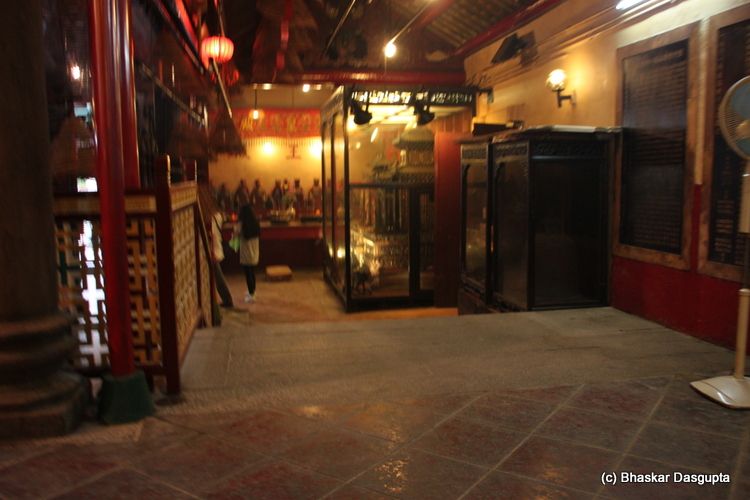
No comments:
Post a Comment